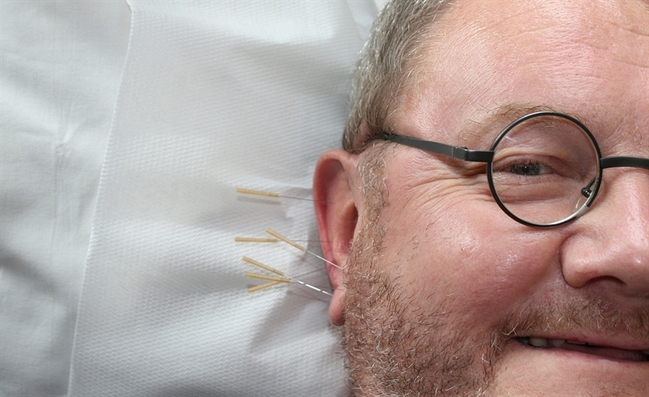by Tracy Ward
When conventional rehabilitation methods are just not enough, what else can facilitate return to sport? Tracy Ward looks at the evidence for and against acupuncture.
The use of acupuncture has been documented for centuries and it is regularly used in traditional Chinese medicine (TCM). Acupuncture involves the use of small, disposable, single use, sterilised needles to pierce the skin’s surface to a specific depth. The location and depth of needle insertion depends on the injury and the desired treatment effects. Needle location often follows meridians; which are the channels or pathways in the body based on TCM.
TCM is an ancient form of medicine that dates back to 1000BC. It is a holistic approach that the Chinese used to (and still do) treat anything and everything including systemic conditions, long-term illness, and emotional stresses such as depression and irritable bowel syndrome. TCM aims to restore balance within the body for optimal health, just as our body’s normal functions require homeostasis for cell regulation. The philosophy of TCM is to provide the correct stimulus to trigger natural healing mechanisms. This philosophy has influenced the Western approach, where the principles remain similar, but where the use of acupuncture is heavily reliant upon clinical findings and scientific evidence.
Why acupuncture?
Acupuncture can provide a number of benefits, including:
- Pain relief – Acupuncture needles can be placed where the injury occurred in the muscle or tissue, and also the surrounding areas. Their insertion provides a minor trauma to the skin, which stimulates the production of pain relieving chemicals both locally at the trauma site, and at the brain and spinal cord level. Chemicals such as endorphins and opioids are released and pain feedback channels from the pain source to the brain are blocked so that the level of pain perceived by the brain is reduced1.
- Inflammation reduction – The microtrauma of needle insertion also stimulates an natural anti-inflammatory response by releasing chemicals that cause vasodilation (blood vessel dilation) and vascular permeability (this allows greater flow of chemicals through the vessels)2. These physiological responses allow the removal of inflammatory mediators from the injury site, and the enhancement of healing mediators to the area.
- Trigger point release – In addition to promoting anti-inflammatory and pain relieving mechanisms, acupuncture can also be used to resolve regions of tightened muscle called trigger points. Trigger points (also known as muscle knots) occur when there is the over-contraction of a small number of muscle fibres in one region3. Needling directly in to the trigger points simply causes mechanical disruption of the contracted muscle fibres to encourage relaxation. It also stimulates blood flow and the delivery of oxygen and nutrients through vasodilation, and reduces the elevated electrical activity in the muscle, allowing them to relax4.
Acupuncture in rehab – acute intervention
Given the potential benefits, acupuncture treatment may help accelerate the return to rehabilitation and training for athletes. With pain modulating and inflammatory reduction effects the athlete is then better placed to begin loading their body and the injury safely. An example is trigger point release.
Trigger points can often develop after repetitive activity, eccentric and concentric exercises, and in association with pain5. The acute onset of pain from a muscle contraction or spasm is usually the result of overloading the muscle, over stretching it, or increased activity without adequate warm up or preparation. The trigger point development will produce nociceptive pain, reduce the range of movement, and may alter gait patterns, giving an overall loss of function.
One case study describes the acute onset of hamstring muscle pain in a football player whilst warming up prior to a game6. Serious injury including a muscle tear was ruled out and the player was considered essential to the game so immediate intervention was required. During these match situations there is not time for prolonged rehabilitation methods and often manual treatment can provoke further pain and disability.
The sudden onset of pain with loss of limb movement suggested both an inflammatory and mechanical component to his injury. The player received acupuncture needling in to the trigger points within his hamstring muscles, and also needling along the ‘bladder meridian’ (see figure 1). This is the meridian that promotes the pain relieving and anti-inflammatory effects for the lower limb. Treatment time was only 4 minutes long because the match was due to begin. However following his treatment session his pain levels reduced dramatically and he regained full function. He managed to play the full match with no adverse effects. This case study demonstrated immediate intervention, which facilitated rapid return to play with no adverse effects. Trigger point acupuncture can also be used after games or training when acute muscle spasms occur and the muscle needs further stimulus to relax. This is often a more gentle approach to the acute situation, where too much massage or manipulation can provoke further pain and muscle contraction.











